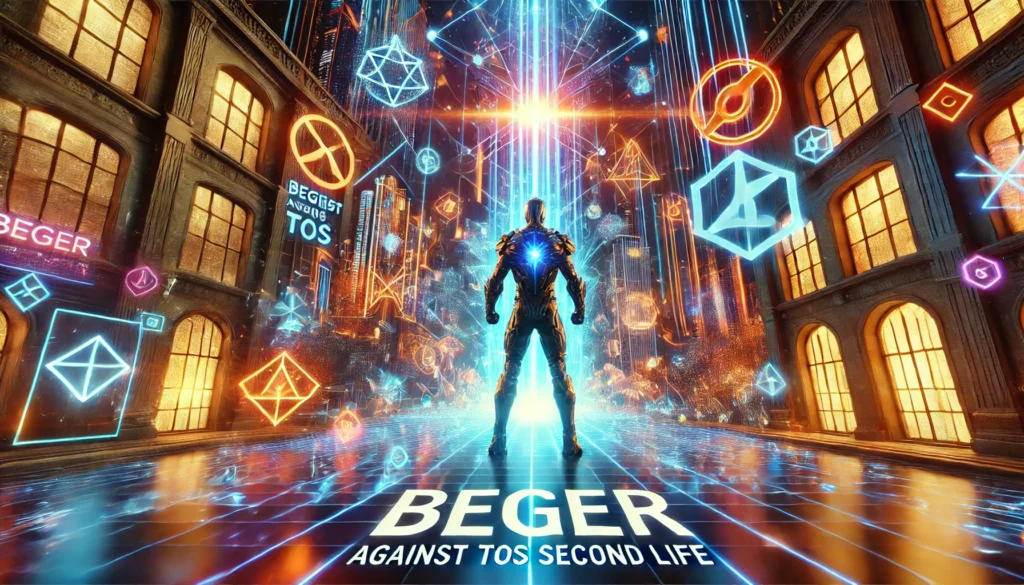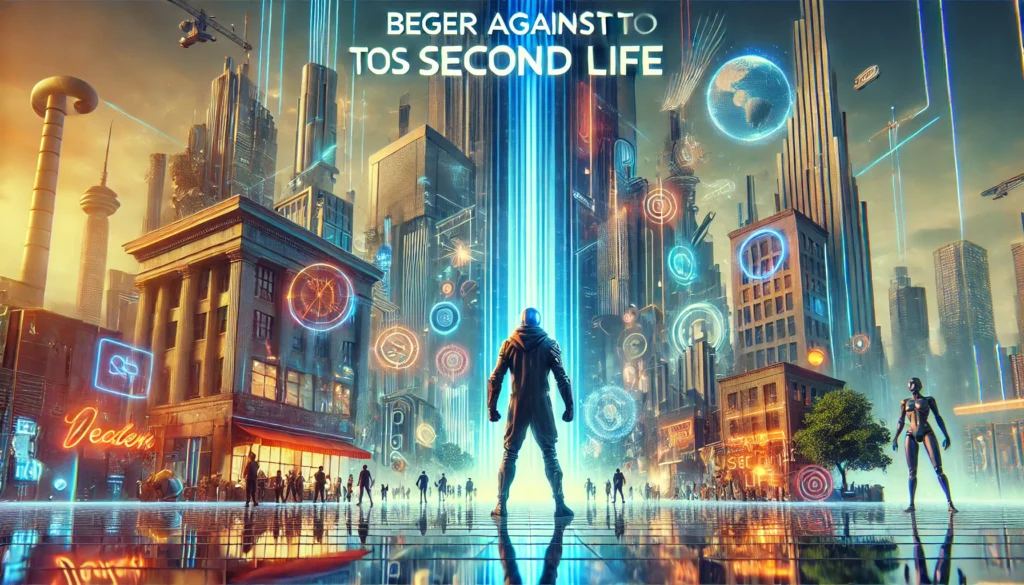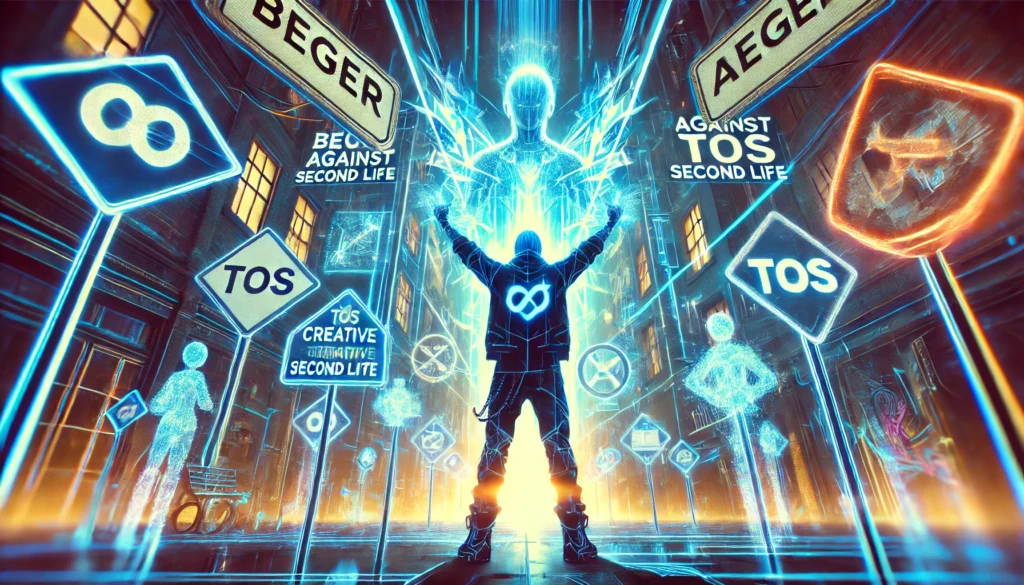Beger Againts TOS Second Life: A Tale of Creativity, Rebellion, and Community
The digital realm of Second Life stands as one of the most innovative and immersive virtual platforms ever created. It allows its residents to create, explore, and socialize in ways that transcend the boundaries of the physical world. From stunning architectural designs to interactive games and sprawling digital cities, Second Life is a playground for creativity. However, even in this seemingly infinite universe, rules and regulations exist—embodied in the platform’s Terms of Service (TOS).

For most, the TOS is just a document to agree to before diving into the creative wonders of Second Life. But for a passionate and talented avatar named Beger, the TOS represented a challenge. Beger’s story, encapsulated in the now-famous saga of Beger Againts TOS Second Life, is a striking example of how one individual’s rebellion can spark a movement and redefine the boundaries of what’s possible in a virtual world.
Second Life: A World Without Limits?
Before we delve into the saga of Beger Againts TOS Second Life, it’s important to understand the environment that makes such stories possible. Second Life is not a game in the traditional sense; it is a user-driven virtual world. Residents can create avatars, build homes, establish businesses, and even host events. Many treat it as a second reality, using it to forge connections, express creativity, or generate income.
Second Life thrives on its community’s creative potential. Users can design their own clothing, sculpt virtual landscapes, and even script custom animations or games. However, all these activities are governed by the TOS, which lays out the platform’s rules. The TOS covers areas such as intellectual property, acceptable behavior, and content-sharing policies.

While the TOS aims to maintain fairness and order, some users, like Beger, felt its restrictions hindered their creative expression. This conflict between regulation and innovation is the heart of the Beger Againts TOS Second Life story.
Beger: The Creator Who Challenged the Status Quo
Beger emerged as one of Second Life’s most talented creators. Known for their breathtaking virtual designs and willingness to push boundaries, Beger was celebrated in the community for their originality and bold ideas. However, Beger’s unconventional approach often brought them into conflict with the platform’s rules.
One of Beger’s most famous projects was “OpenWorld City,” a collaborative virtual space that encouraged other residents to modify and expand on Beger’s creations. This project quickly gained popularity but also drew the attention of Linden Lab, the creators of Second Life. Elements of the project were flagged for violating the TOS, particularly rules surrounding content-sharing and intellectual property.
Beger saw this as an affront to their creative freedom. Refusing to back down, they launched a campaign that would come to define the phrase Beger Againts TOS Second Life.
The Beginnings of the Conflict
The removal of parts of “OpenWorld City” was the spark that ignited the Beger Againts TOS Second Life movement. Beger argued that the TOS unfairly restricted the ability of creators to collaborate and innovate. In their view, the rules prioritized control over creativity, stifling the potential of Second Life as a truly open platform.

Beger’s campaign began modestly, with posts on forums and social media platforms calling for changes to the TOS. However, their message struck a chord with many in the community who shared similar frustrations. Creators who felt limited by the TOS rallied behind Beger, and the campaign quickly gained momentum.
The Rise of a Movement
As the slogan Beger Against TOS Second Life spread, it became a rallying cry for those who sought greater freedom in the virtual world. Supporters organized virtual protests, where avatars gathered in public spaces to demand changes to the TOS. These events often featured speeches, performances, and art installations inspired by the movement.
One notable event was the “Creative Freedom Festival,” a week-long gathering that showcased works by artists and creators who felt constrained by the TOS. The festival drew thousands of residents, highlighting the widespread support for Beger’s cause.
Support for Beger wasn’t limited to in-world activities. Blogs, forums, and even external social media platforms buzzed with discussions about Beger Againts TOS Second Life. Creators shared stories of their own struggles with the TOS, adding fuel to the fire.
The Response from Linden Lab
Linden Lab, the company behind Second Life, found itself under increasing pressure to address the growing unrest. While the TOS had been updated periodically over the years, this was the first time it faced such widespread backlash.
In response, Linden Lab organized a series of town hall meetings within Second Life. These meetings allowed residents to voice their concerns directly to the developers. Many participants cited the Beger Againts TOS Second Life movement as evidence that the TOS needed significant changes.
Although Linden Lab made some adjustments to the TOS in response to these discussions, they stopped short of implementing the sweeping reforms that Beger and their supporters demanded. This partial victory left many feeling that the battle was far from over.
The Broader Implications of the Conflict
The story of Beger Againts TOS Second Life is about more than just one creator’s battle with platform rules. It raises important questions about the nature of creativity and governance in digital spaces.
- Who owns virtual creations? In Second Life, users retain ownership of their work, but the TOS gives Linden Lab significant control over how that work can be shared or modified. This tension between creator rights and platform control is at the heart of many disputes.
- How much freedom should users have? While rules are necessary to maintain order, overly strict regulations can stifle the innovation that makes platforms like Second Life thrive.
- What role does the community play? The Beger Againts TOS Second Life movement demonstrated the power of collective action in shaping the policies of digital platforms.
The Legacy of Beger Againts TOS Second Life
Although the immediate conflict has faded, the legacy of Beger Againts TOS Second Life endures. The movement inspired a wave of activism within Second Life, encouraging residents to think critically about the rules that govern their virtual lives.
Beger’s actions also had a lasting impact on the platform’s culture. Many creators now feel more empowered to push boundaries and advocate for their rights. Even Linden Lab has acknowledged the need for greater transparency and flexibility, though challenges remain.
Beyond Second Life, the saga of Beger Againts TOS Second Life has become a case study in the broader conversation about digital rights and governance. It serves as a reminder that even in virtual worlds, the principles of freedom, fairness, and community are worth fighting for.
Conclusion
The epic tale of Beger Againts TOS Second Life is a powerful reminder of the human spirit’s resilience and creativity, even in a digital environment. It’s a story of one individual’s courage to challenge the status quo and the community’s ability to rally around a shared cause.
As virtual worlds like Second Life continue to evolve, the questions raised by Beger’s rebellion remain as relevant as ever. How do we balance creativity with order? How do we ensure that platforms empower their users rather than constrain them? And how can individuals and communities work together to shape the future of digital spaces?
The name Beger Againts TOS Second Life will forever be etched in the platform’s history as a symbol of the fight for freedom and innovation. Whether you see Beger as a hero, a rebel, or something in between, their story is one that continues to inspire and provoke thought.
